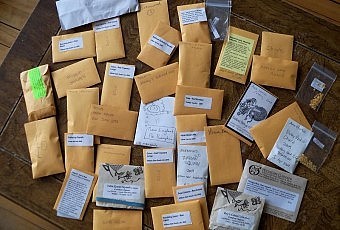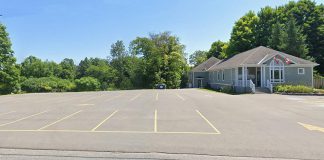
This winter has been one of many apple pies, apple crisps, and a variety of other apple-themed dishes at my house, as I’ve been slowly working through the many bags of frozen apples I put away last fall.
It all began in mid-spring last year, with the apple tree on the front lawn being loaded with blossoms and buzzing with bees, butterflies, and other pollinators.
That was a sure sign that something great was in store for the months ahead.
As time went on, we quickly realized that this was probably one of the largest crops of apples the tree had produced in quite some time.
As it came time to harvest the apples, a problem was apparent.
Whoever planted this tree — likely previous owners of the house — failed to maintain it. The tree had grown 15 to 20 feet tall, with many of the best apples far out of reach. Harvesting the highest fruit came down to a less-than-ideal practice of knocking them off the branches with a roof rake and pool net.
This is a perfect example of why pruning fruit trees is so important. Think of pruning as a way of dwarfing a tree. Left untrimmed, a fruit tree will grow to a large size, making harvesting difficult due to the height and overall size of the tree. A pruned tree is left with a smaller area and fewer branches to bear fruit, making harvesting a more manageable process.
They say size doesn’t matter, but after peeling dozens of small apples, I disagree. This is another example why pruning is so important for fruit trees. With less space to bear fruit, the size of the fruit tends to be larger and branches stronger to support it. My tree produced some decent-sized apples, but by and large they were small to medium sized — meaning it took a lot of them to fill a freezer bag.
Another important reason for pruning this season is to encourage more airflow and sunlight through the inner branches. Fruit trees need lots of sunlight to reach all their branches and abundant airflow to mitigate the growth of fungal diseases that affect both the fruit and foliage.
We’ll soon be closing in on the best time of year to prune fruit trees. I say this because, climatologically speaking, the harshest part of winter is behind us, but the trees are still dormant before bursting full of life once spring arrives.
Generally speaking, pruning tasks should be finished up before leaves appear on the trees in the spring. It’s best to not do it in late fall or early winter, due to potential damage to the tree caused by intense cold in the winter months.
If you have fruit trees in your yard and are curious to learn more about how to prune them, there is a fantastic learning opportunity coming up at the GreenUP Ecology Park.
On Saturday March 1st, 2014, you’re invited to join urban fruit tree advocates Andy Harjula and Marcy Adzich for an informative early season outdoor workshop at the park. Andy will go over the basics of pruning, why it’s important, and the benefits it can have for your fruit trees. There will even be an opportunity to practice your pruning skills on some of the fruit tree stock at the park.
The cost for this workshop is $10, with proceeds going to outdoor education programs at the park GreenUP Ecology Park. The park is located at 1899 Ashburnham Drive, just beside the Peterborough Utilities parking lot. You are asked to meet at the rain shelter and dress warmly.
For more information, contact Marcy Adzich by email at workshops@greenup.on.ca or by phone at 705-745-3238 ext. 212.

Those in attendance at the event will be cleaning and packing up black turtle beans and other seeds. You’re invited to help out with that process or bring your own seeds to package up. Basic seed cleaning equipment and envelopes will be provided. There will be a chance to network and chat about the logistics and how-to’s of seed saving while we work.
The event is being held at the GreenUP offices (378 Aylmer Street North in downtown Peterborough) from 6:30 to 8:30 p.m. and is free to attend. For more information, visit growpeterborough.org.


























